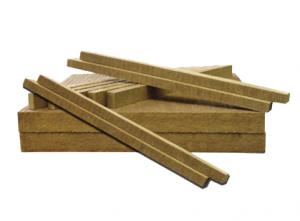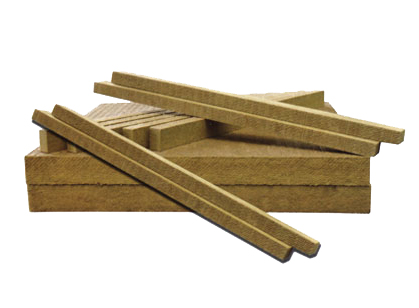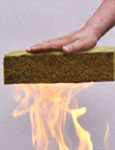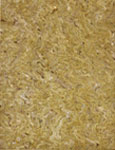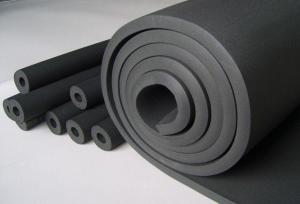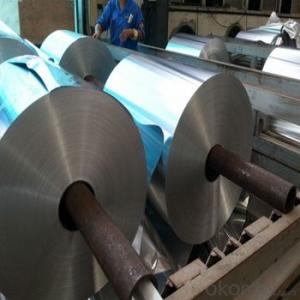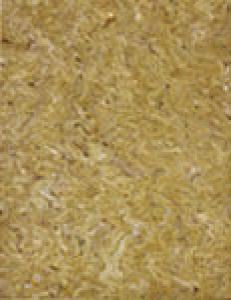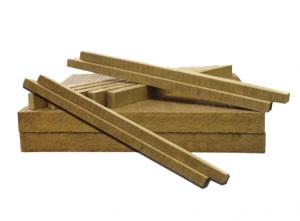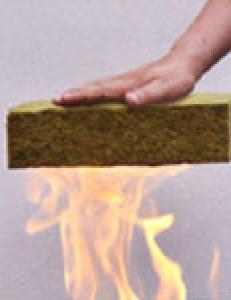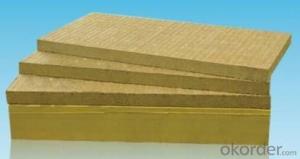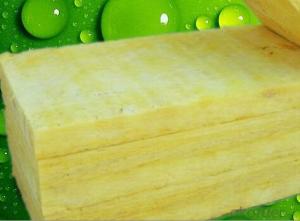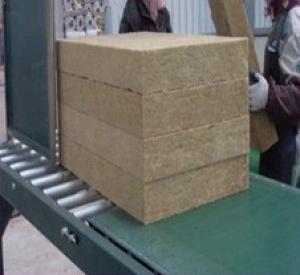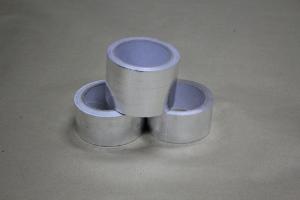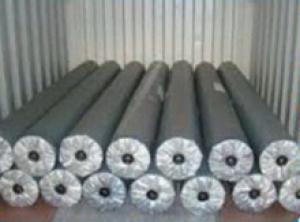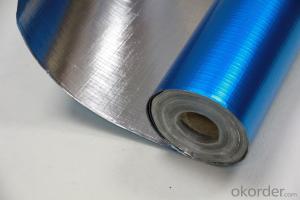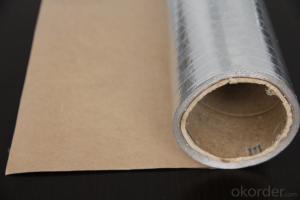Fire Proof external Wall Insulation Rock Wool Strip
- Loading Port:
- Qingdao
- Payment Terms:
- TT or LC
- Min Order Qty:
- 1 m²
- Supply Capability:
- 700 m²/month
OKorder Service Pledge
OKorder Financial Service
You Might Also Like
1.Introduction
Fire proof external wall insulation rock wool strip is designed for improving the fire resistance of building external wall insulation system.This product is matched with the exterior insulation materials supporting up to less than Class A fire together, which is used as a fire buffer to increase the whole fire resistance of the external walls of the building. It has the properties of high compressive strength and tensile strength, low water absorption and moisture absorption, good dimensional stability and anti-aging
2.Specification
project | rock wool lamella. | |
Length and width(mm) | 1200*150 | 1200*200 |
(kg/m3) Nominal Density | 100 | |
Thickness(mm) | 30—200 | |
3. Technical parameters
properties | unit | TSWL100 | standard |
Compression strength at 10% deformation | kPa | ≥40 | GB/T13480 |
Delamination strength (perpendicular to surface) | kPa | ≥80 | JG149-2003 |
Thermal conductivityλ25℃ | w/(m•K) | ≤0.048 | GB/T10295 |
Combustion performance | --- | Non-combustible grade A | GB/T8624 |
water repellence | % | ≥98 | GB/T10299 |
Acidity coefficient | --- | ≥1.8 | GB/T5480 |
Moisture absorption | % | ≤1.0 | GB/T5480 |
Absorption(partial immersion 24h) | kg/m2 | ≤1.0 | GB/T25975-2010 |
water Absorption(partial immersion 28d) | kg/m2 | ≤3.0 | GB/T25975-2010 |
Noise Reduction Coefficient | --- | ≥0.6 | GB/T18696 |
Dimension Stability | % | ≤1.0 | GB/T8811 |
Thickness deviation | mm | ±3 | GB/T5480 |
Squareness | mm/m | ≤5 | GB/T5480 |
Flatness | mm | ≤6 | GB/T25975-2010 |
The above figures are only for reference. With the development of the production facility and technology, we reserve the right to improve our product performance. |
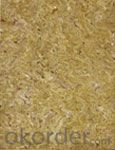
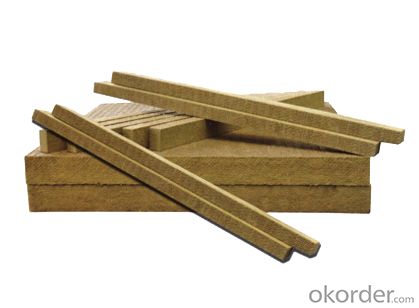
4.Typical applications:
1. The product can be matched with polystyrene board, extruded sheet and other Non-combustible grade A insulation materials together ,which can be used as a fire barrier, improving the fire resistance of external wall insulation systems.
2 .The product can be used for exterior wall insulation materials and make the fiber direction perpendicular to the primary wall surface, improving the tensile strength, compressive strength.
3.The product can be used for fireproof, waterproof, thermal insulation, sound insulation requirements in the higher places as the core material of the metal sandwich board
Packaging and storage:
R ock wool strip should be packed with the rock wool trays and plastic film .it also can be bundled .so that it is convenient to transport and storage. Products should be stored indoors or covered with a waterproof material .
5.FAQ:
We have organized several common questions for our clients,may help you sincerely:
①How about your company?
A world class manufacturer & supplier of castings forging in carbon steel and alloy steel,is one of the large-scale professional investment casting production bases in China,consisting of both casting foundry forging and machining factory. Annually more than 8000 tons Precision casting and forging parts are exported to markets in Europe,America and Japan. OEM casting and forging service available according to customer’s requirements.
②How to guarantee the quality of the products?
We have established the international advanced quality management system,every link from raw material to final product we have strict quality test;We resolutely put an end to unqualified products flowing into the market. At the same time, we will provide necessary follow-up service assurance.
- Q: What precautions should be taken when using aluminum foil facing in construction or other applications?
- <p>When using aluminum foil facing, safety measures include ensuring proper ventilation to prevent build-up of fumes, wearing protective gear such as gloves and masks to avoid skin and respiratory irritation, and following manufacturer's guidelines for safe handling and application. It's also crucial to avoid contact with open flames or high heat sources as aluminum foil can melt or ignite. Always clean up spills immediately to prevent slipping hazards and ensure that the working area is well-lit to avoid accidents.</p>
- Q: What distinguishes various grades of aluminum foil sheets from one another?
- <p>Different grades of aluminum foil sheets are distinguished by their thickness, strength, and purity. Grade 1 is the purest and softest, used for food wrapping and baking. Grade 2 is harder and more tear-resistant, suitable for heavy-duty use like grilling. Grade 3 is an alloy and offers high strength and durability, often used in industrial applications. Grade 4 is a heat-treatable alloy, providing high strength and used in aerospace and automotive industries. Each grade has specific applications based on its unique properties.</p>
- Q: What are the precautions to be aware of when using aluminum foil in the kitchen?
- <p>When using aluminum foil in the kitchen, it's important to avoid direct contact with acidic or alkaline foods as it may react and contaminate the food. Do not use it in broilers or ovens above 450掳F (232掳C), as it can melt and release harmful fumes. Avoid wrapping food in aluminum foil for extended periods, especially at high temperatures, as it may lead to the foil breaking down and leaching aluminum into the food. Always check for any tears or punctures in the foil to prevent food from coming into contact with the cooking surface directly.</p>
- Q: Is it safe and effective to use aluminum foil with a reflective side for baking purposes?
- <p>Yes, aluminum foil facing can be used for baking. The shiny side of aluminum foil is often used to cover baking dishes to prevent food from drying out, to create a steam effect, or to reflect heat for even cooking. However, it's important to avoid direct contact between the foil and the heating elements of the oven to prevent fire hazards. Always follow the manufacturer's guidelines for safe use and placement of aluminum foil in your oven.</p>
- Q: Can aluminum foil be utilized as a facing material for cooking in a microwave oven?
- <p>Aluminum foil facing should not be used for microwave cooking. Microwaves can cause the foil to heat up and potentially create sparks or even start a fire. It can also reflect microwaves, damaging the microwave's interior and potentially the oven itself. Always use microwave-safe materials, such as glass or microwave-safe plastic containers, for cooking in a microwave.</p>
- Q: Is aluminum foil a healthier alternative to plastic wrap?
- <p>Aluminum foil may have some health benefits over plastic wrap due to its non-porous nature, which prevents the absorption of flavors and odors. It's also heat resistant, making it suitable for cooking and reheating food. However, aluminum foil doesn't cling to surfaces as well as plastic wrap, making it less convenient for sealing food. Additionally, there are concerns about aluminum exposure, though the risk is considered low when used in cooking. It's important to note that the health benefits of using aluminum foil over plastic wrap are not definitively established, and both have their pros and cons.</p>
- Q: Can aluminum foil be shaped into a roasting rack?
- <p>Yes, you can create a makeshift roasting rack using aluminum foil. To do this, take two long sheets of aluminum foil and fold them back and forth to create a series of parallel ridges. These ridges will provide support for your roast while allowing air to circulate underneath. Place the folded foil on a baking sheet, spacing the ridges evenly apart to create a grid-like pattern. Your roast can then be placed on top of this foil 'rack' for cooking. This method is a simple and effective way to elevate your food for better heat distribution and crisping.</p>
- Q: Can aluminum foil be used as a material to create a pot holder?
- <p>Yes, aluminum foil can be used to make a pot holder. It's a versatile material that can withstand high temperatures, making it suitable for this purpose. Simply cut a piece of aluminum foil to the desired size, fold it in half, and use it to protect your hands from heat when handling pots and pans. However, for repeated use or a more durable solution, consider using heat-resistant materials like silicone or fabric specifically designed for pot holders.</p>
- Q: Explain the distinct characteristics of aluminum foil facing compared to other metal facings.
- <p>Aluminum foil facing is a type of metal facing material that is made from thin sheets of aluminum, known for its light weight, high reflectivity, and excellent heat resistance. It is commonly used in construction for insulation and moisture protection. In contrast, other types of metal facings, such as steel or copper, may offer different properties. Steel facings are often stronger and more durable but can be heavier and less resistant to corrosion without protective coatings. Copper facings are known for their natural resistance to corrosion and can be used in applications requiring antimicrobial properties or high thermal and electrical conductivity. Each type of metal facing has its unique advantages and is chosen based on specific application needs.</p>
- Q: The user wants to know if they can reuse their old aluminum foil facing to create a new one if it gets damaged.
- <p>Yes, you can use your old aluminum foil facing to make a new one if it gets damaged. Simply clean the old foil facing thoroughly, ensuring all adhesive residue is removed. Then, cut a new piece of aluminum foil to the appropriate size and shape. Apply a thin layer of adhesive, such as construction adhesive or double-sided tape, to the back of the new foil. Press it firmly onto the old facing, ensuring a smooth and secure bond. Allow it to dry according to the adhesive's instructions before using. This can be a cost-effective way to extend the life of your foil facing.</p>
Send your message to us
Fire Proof external Wall Insulation Rock Wool Strip
- Loading Port:
- Qingdao
- Payment Terms:
- TT or LC
- Min Order Qty:
- 1 m²
- Supply Capability:
- 700 m²/month
OKorder Service Pledge
OKorder Financial Service
Similar products
Hot products
Hot Searches
Related keywords
